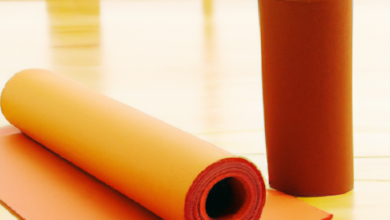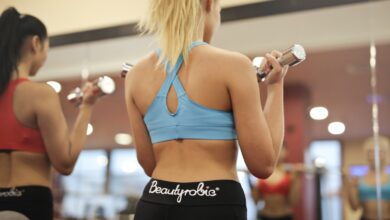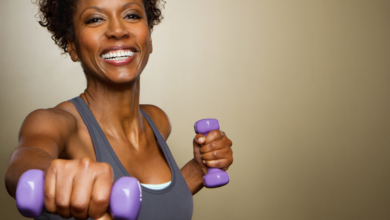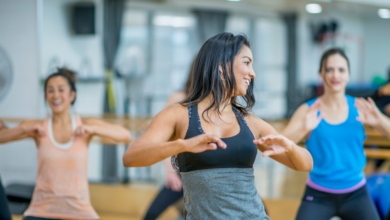
In “Yoga for the Modern Woman: A Guide to Flexibility & Strength,” discover the transformative power of yoga in today’s fast-paced world. This comprehensive guide offers practical insights and techniques specifically tailored to the needs of modern women. Whether you’re a busy professional, a multitasking mom, or simply seeking balance in your life, this article will empower you to harness the benefits of yoga for increased flexibility, inner strength, and overall well-being. Experience the journey towards a healthier, more centered you as you embark on this exciting adventure into the world of yoga.
Understanding the Benefits of Yoga
Yoga is a holistic practice that offers numerous benefits for both the mind and body. One of the key advantages of regularly practicing yoga is improved flexibility. By engaging in various poses and stretching exercises, you can gradually increase your range of motion and enhance your overall flexibility. This can be particularly beneficial for individuals who engage in other physical activities, such as running or weightlifting, as it helps reduce the risk of injury and improves overall athletic performance.
In addition to flexibility, yoga also helps to increase strength. Many yoga poses require you to engage and activate different muscle groups, which helps build overall strength and endurance. By practicing yoga regularly, you can develop stronger muscles, particularly in the core, arms, legs, and back. The increased strength not only enhances your physical capabilities but also helps improve your posture and stability.
Another significant benefit of yoga is its effectiveness in promoting weight loss. While yoga may not be as intense as other forms of exercise, it can still contribute to weight loss when combined with a healthy diet and lifestyle. Yoga helps to improve metabolism and burn calories. Additionally, certain yoga styles, such as power yoga or vinyasa yoga, have a more vigorous and fast-paced nature, which increases the heart rate and helps to shed excess pounds.
Yoga is well-known for its ability to reduce stress and anxiety. The deep breathing exercises, meditation, and relaxation techniques practiced in yoga help activate the body’s relaxation response, which promotes a sense of calm and tranquility. Regular yoga practice can significantly reduce stress levels and improve overall mental well-being. Moreover, yoga has been found to be an effective tool for managing anxiety disorders, providing individuals with a natural and holistic approach to alleviate symptoms.
In addition to reducing stress, yoga also enhances mental clarity. Through the combination of physical movement, breath control, and mindfulness, yoga helps to quiet the mind and increase focus. By practicing yoga, you can train your mind to stay present and attentive, enabling you to better concentrate on tasks and make clearer decisions. Furthermore, the meditative aspect of yoga promotes self-reflection and introspection, helping to cultivate a greater sense of self-awareness and mental clarity.
Lastly, yoga is known for its ability to boost energy levels. While some exercises may leave you feeling exhausted, yoga has the opposite effect. By incorporating deep breathing, stretching, and relaxation into your practice, you increase the flow of energy throughout your body, leaving you feeling rejuvenated and revitalized. Regular yoga practice has been found to improve feelings of vitality and combat fatigue, making it an excellent choice for those looking to boost their energy levels.
Choosing the Right Yoga Style
With a wide variety of yoga styles available, it can be overwhelming to choose the one that suits you best. Here are some popular yoga styles to consider:
Hatha Yoga
Hatha yoga is a gentle and slow-paced style that is perfect for beginners. It emphasizes the basic yoga poses and breathing techniques, making it a suitable choice for those who are looking to build a strong foundation in their yoga practice.
Vinyasa Yoga
Vinyasa yoga is a more dynamic and flowing style that synchronizes movement with breath. It involves transitioning between poses in a smooth and continuous manner. Vinyasa yoga offers a cardiovascular workout while also focusing on building strength and flexibility.
Power Yoga
Power yoga is a more intense and challenging style that incorporates elements of strength training and cardiovascular exercise. It typically involves a series of fast-paced and vigorous movements, making it a great choice for those who want to build strength, increase endurance, and burn calories.
Ashtanga Yoga
Ashtanga yoga follows a specific sequence of poses and is known for its physically demanding nature. It involves flowing through a set sequence of poses in a dynamic and energetic manner. Ashtanga yoga is ideal for individuals who enjoy a structured and disciplined approach to their practice.
Bikram Yoga
Bikram yoga, also known as hot yoga, takes place in a heated room and consists of a series of 26 poses. The heat is believed to enhance flexibility and detoxification. Bikram yoga is suitable for those who enjoy practicing yoga in a warm and sweat-inducing environment.
Iyengar Yoga
Iyengar yoga focuses on alignment and precision in each pose. Props such as blocks, straps, and bolsters are often used to assist in achieving proper alignment. Iyengar yoga is great for individuals who want to work on their posture, balance, and overall body awareness.
When choosing a yoga style, it’s essential to consider your fitness level, goals, and personal preferences. It may be helpful to try out different styles and classes to find the one that resonates with you the most.
Creating the Perfect Yoga Space
Creating a dedicated and inviting yoga space at home can enhance your practice and make it more enjoyable. Here are some tips for creating the perfect yoga space:
Finding a Quiet and Comfortable Location
Choose a quiet area in your home where you can practice without distractions. It could be a spare room, a corner of your bedroom, or even the living room. Ensure that the space is clean and clutter-free, allowing you to move freely during your practice. Consider using natural light or soft lighting to create a calming ambiance.
Investing in Essential Yoga Props
Investing in essential yoga props can greatly enhance your practice. These props include a yoga mat, yoga blocks, a yoga strap, a yoga blanket, a yoga bolster, and a meditation cushion. These props help provide support and stability, allowing you to deepen your stretches and maintain proper alignment.
Setting the Right Ambiance
Set the right ambiance in your yoga space by using soothing colors, such as pastels or neutrals. Consider adding plants or natural elements to create a sense of tranquility. You can also incorporate calming scents, such as essential oils or incense, to create a relaxing atmosphere. Playing soft instrumental music or nature sounds can further enhance the ambiance.

Getting Rid of Distractions
Minimize distractions in your yoga space by turning off electronic devices and putting them out of sight. Let your family members or roommates know that you need uninterrupted time for your practice. Disconnecting from technology and external distractions allows you to fully focus on your yoga practice and cultivate a sense of inner peace.
By creating a dedicated yoga space that is inviting and free from distractions, you can establish a sacred environment where you can fully immerse yourself in your practice.
Essential Yoga Equipment
Having the right yoga equipment is essential for a safe and comfortable practice. Here are some essential yoga equipment items you should consider:
Yoga Mat
A high-quality yoga mat provides cushioning and grip, preventing you from slipping during your practice. Look for a mat that suits your preferences in terms of thickness, material, and texture. Consider investing in a mat that is eco-friendly and durable for long-term use.
Yoga Blocks
Yoga blocks are versatile props that provide stability, support, and assistance in maintaining proper alignment. They can be used to modify poses, deepen stretches, and make challenging poses more accessible. Choose blocks that are made of a dense and sturdy material for optimal support.
Yoga Strap
A yoga strap is a useful tool that helps increase flexibility and deepen stretches. It can assist in reaching inaccessible body parts and allow you to hold poses for longer periods. Look for a strap that is adjustable and made of durable material for maximum versatility.
Yoga Blanket
A yoga blanket is a versatile prop that can be used for support, cushioning, or warmth during your practice. It can be folded or rolled to provide height in seated or lying poses, or used to cover yourself during relaxation or meditation. Opt for a blanket that is soft, lightweight, and machine-washable.
Yoga Bolster
A yoga bolster is a firm and supportive cushion that helps you relax and restore your body. It can be used for gentle stretching, restorative poses, or as a prop for seated meditation. Choose a bolster that is made of a dense and durable material that retains its shape over time.
Meditation Cushion
A meditation cushion, also known as a zafu, provides comfort and support during meditation practice. It helps elevate the hips and align the spine, allowing for a more comfortable and stable seated position. Look for a cushion that is firm, yet comfortable, and has a removable cover for easy cleaning.

Investing in high-quality yoga equipment ensures that you have the necessary tools to support and enhance your practice, allowing you to fully reap the benefits of yoga.
Starting Your Yoga Journey
Starting your yoga journey can be both exciting and challenging. Whether you are a complete beginner or have some experience, here are some key aspects to consider:
Warming Up and Cooling Down
Before diving into your yoga practice, it’s essential to warm up your body and prepare it for movement. Gentle stretching, dynamic movements, and joint mobilization exercises are effective ways to warm up. Cooling down after your practice helps bring your body back to a state of relaxation and allows for proper recovery. Incorporate gentle stretches and relaxation techniques to cool down after each session.
Breathing Techniques
Breathing is an integral part of yoga practice. Learning and practicing proper breathing techniques, such as deep belly breathing or alternate nostril breathing, can help calm the mind, reduce stress, and enhance the benefits of yoga poses. Focus on mindful breathing throughout your practice, synchronizing your breath with each movement.
Basic Yoga Poses for Flexibility
Start your yoga journey by learning and practicing basic yoga poses that help improve flexibility. These poses include downward-facing dog, child’s pose, cat-cow pose, and forward folds. Take your time to explore each pose, paying attention to proper alignment, and listening to your body’s limitations. As your flexibility improves, you can gradually progress to more advanced poses.
Strength-Building Yoga Poses
In addition to flexibility, it’s important to incorporate strength-building yoga poses into your practice. Poses such as plank, warrior poses, boat pose, and chaturanga help build core strength, upper body strength, and muscular endurance. Focus on engaging specific muscle groups while maintaining proper alignment in each pose.
Common Yoga Mistakes to Avoid
As you embark on your yoga journey, it’s important to be aware of common mistakes and how to avoid them. Some common mistakes include pushing yourself too hard, comparing yourself to others, not listening to your body, and neglecting proper alignment. Remember that yoga is a personal practice, and it’s important to honor your own body and limitations. Take your time to learn and understand each pose, and don’t be afraid to ask for guidance from a experienced yoga teacher.
Yoga Etiquette
Practicing yoga in a studio or attending a group class involves following certain etiquette guidelines. Arrive early to set up your mat and give yourself time to settle in. Avoid wearing strong perfumes or fragrances to respect others’ sensitivities. Be mindful of keeping conversation and distractions to a minimum during class. Lastly, clean and put away any props you use and thank the teacher for their guidance at the end of the session.

By starting your yoga journey with these key aspects in mind, you can establish a solid foundation for your practice and progress at your own pace.
Incorporating Yoga into a Busy Schedule
With a busy schedule, finding time for yoga can be a challenge. However, it’s important to prioritize self-care and make time for activities that nourish your body and mind. Here are some tips for incorporating yoga into a busy schedule:
Setting Realistic Goals
Set realistic goals for your yoga practice based on your availability and commitment level. Start by dedicating a certain number of days per week to practicing yoga. It can be as little as 10-15 minutes a day or longer sessions a few times per week. Consistency is key, so choose a schedule that you can realistically commit to.
Finding the Right Time
Find a time of day that works best for you and your schedule. Some people prefer practicing yoga in the morning to energize and set a positive tone for the day. Others find that practicing in the evening helps them unwind and relax before bedtime. Experiment with different times of day to find what works best for you.
Creating a Consistent Routine
Create a consistent routine by allocating a specific time and space for your yoga practice. Treat it as an important appointment with yourself that you commit to. By making it a regular part of your schedule, it becomes easier to stick to and make progress in your practice.
Managing Time Constraints
If you have limited time, consider incorporating shorter yoga sessions throughout your day. You can break up your practice into shorter segments, such as 10 minutes in the morning and 10 minutes in the evening. Explore options such as online classes or yoga apps that offer shorter sessions designed for busy individuals.
Remember that every minute spent on your mat counts, regardless of the duration. Prioritizing even a few minutes of yoga each day can bring about significant physical and mental benefits over time.
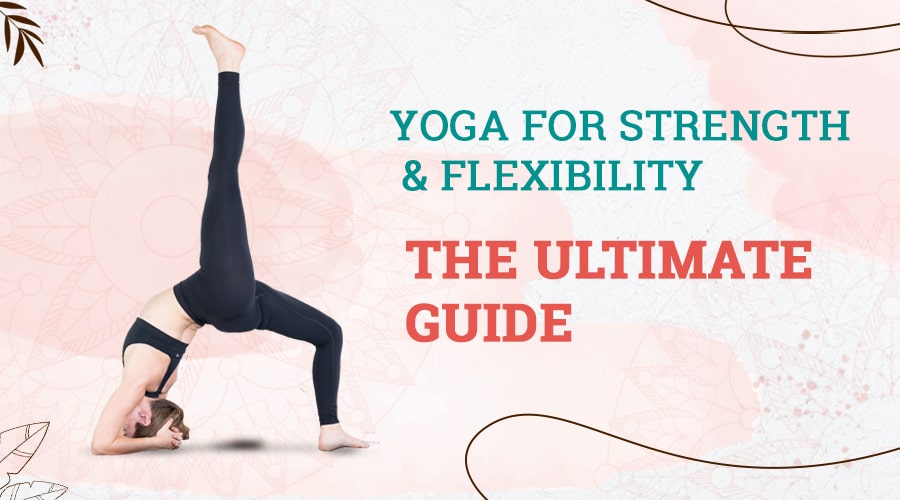
Yoga for Flexibility
Yoga is renowned for its ability to improve flexibility. Here are some yoga techniques and styles that can help enhance flexibility:
Dynamic Stretching
Dynamic stretching involves moving parts of your body through a full range of motion to warm up and stretch the muscles. Incorporate dynamic stretching exercises such as arm circles, leg swings, and hip rotations into your warm-up routine. These movements help increase blood flow and prepare your muscles for deeper stretches.
Deep Stretching
Deep stretching poses, also known as yin poses, are held for longer durations to target deep connective tissues and promote flexibility. Examples of deep stretching poses include seated forward fold, butterfly pose, and wide-legged forward fold. Practice these poses regularly with slow, steady breaths to gradually increase your flexibility.
Yin Yoga
Yin yoga is a slow-paced and meditative style that focuses on holding poses for an extended period, typically ranging from 3 to 5 minutes or longer. This style targets deeper connective tissues, tendons, and ligaments. Yin yoga helps improve flexibility and promotes relaxation and mindfulness.
Restorative Yoga
Restorative yoga involves passive poses supported by props, allowing the body to fully relax and release tension. It helps activate the parasympathetic nervous system, promoting deep relaxation and rejuvenation. Restorative poses, such as supported bridge pose and legs up the wall pose, gently stretch and open the body, enhancing flexibility over time.
By incorporating these yoga techniques and styles into your practice, you can gradually improve your flexibility and experience greater freedom of movement in your everyday life.
Yoga for Strength
While often associated with flexibility, yoga is also an excellent tool for building strength. Here are some yoga techniques and styles that can help increase strength:
Power Yoga
Power yoga is a vigorous and physically demanding style that combines strength-building poses with flowing movements. It focuses on building muscular strength, endurance, and cardiovascular fitness. Power yoga incorporates challenging poses like arm balances, inversions, and deep squats to build full-body strength.
Ashtanga Yoga
Ashtanga yoga is a dynamic and athletic style that follows a set sequence of poses. It emphasizes strength, flexibility, and breath control. Ashtanga yoga includes a series of sun salutations and standing poses that build strength in the core, arms, and legs. The challenging nature of this practice contributes to increased overall strength and mental focus.
Pilates-Yoga Fusion
Combining elements of yoga and Pilates, Pilates-Yoga fusion classes offer a fusion of core-strengthening exercises, body awareness, and flexibility training. This hybrid practice integrates Pilates exercises, such as abdominal strengthening, with yoga poses and flow sequences to build strength and stability.
Core Strengthening Yoga Poses
Incorporating core-strengthening yoga poses into your practice helps build a strong and stable core, which is essential for overall functional strength and posture. Poses such as plank pose, boat pose, and side plank engage the core muscles and help improve strength, balance, and stability.
By incorporating strength-focused yoga techniques and styles into your practice, you can develop a balanced and functional body that supports you in various physical activities and daily life.
Yoga for Women’s Health
Yoga offers several benefits specifically tailored to women’s health. Here are some ways yoga can support women through different life stages and health concerns:
Alleviating Menstrual Discomfort
Certain yoga poses can help alleviate menstrual discomfort, such as cramps and bloating. Poses like child’s pose, reclined butterfly pose, and supine twist gently stretch and relax the pelvic area, promoting blood flow and reducing discomfort. Restorative and gentle yoga practices are particularly beneficial during menstruation.
Prenatal Yoga
Prenatal yoga provides a safe and nurturing practice for pregnant women. It helps promote strength, flexibility, and relaxation during pregnancy. Prenatal yoga postures focus on gentle stretching, pelvic floor exercises, and breath awareness to support the changing needs of the body and prepare for childbirth.
Postnatal Yoga
Postnatal yoga is designed to support the physical and emotional recovery of new mothers. It focuses on gently toning the pelvic floor, core muscles, and releasing tension in the upper body. Postnatal yoga provides a safe and supportive environment for mothers to reconnect with their bodies and promote overall well-being.
Managing Menopause Symptoms
Yoga can help manage menopause symptoms such as hot flashes, mood swings, and insomnia. Certain yoga poses, such as supported bridge pose, reclining bound angle pose, and standing forward fold, can help reduce hot flashes, promote relaxation, and improve sleep. Restorative and gentle yoga practices can be particularly beneficial during menopause.
By incorporating yoga into their wellness routine, women can enjoy the physical, emotional, and mental benefits that support their well-being at every stage of life.
Taking Your Yoga Practice Beyond the Mat
Yoga is not limited to the physical practice on the mat. It offers valuable teachings and philosophies that can be applied to everyday life. Here are some ways to take your yoga practice beyond the mat:
Mindfulness in Everyday Life
Yoga teaches us to be present and fully engaged in the present moment. Take the principles of mindfulness learned on the mat and apply them to your daily activities. Practice mindful eating, mindful walking, and mindful listening to cultivate a deeper sense of awareness and appreciation for each moment.
Incorporating Yoga Philosophy
Yoga philosophy provides guidance for living a balanced and fulfilling life. Explore the eight limbs of yoga, including the yamas (moral guidelines) and niyamas (personal observances), and reflect on how these principles apply to your thoughts, words, and actions. Integrate the philosophy of ahimsa (non-harming), satya (truthfulness), and santosha (contentment) into your interactions and decision-making.
Bringing Balance to Relationships
Yoga teaches us to cultivate compassion and connection, not only with ourselves but also with others. Practice deep listening, empathy, and patience in your relationships. Nurture a sense of kindness and understanding towards others, fostering harmonious and balanced connections.
Yoga for Self-Care
Yoga is ultimately a practice of self-care and self-love. Prioritize self-care rituals such as meditation, self-reflection, and self-compassion. Take regular breaks to recharge and replenish your energy. Cultivate gratitude and self-appreciation for the unique individual you are.
By taking your yoga practice beyond the mat, you can bring the principles of mindfulness, balance, and self-care into every aspect of your life, creating a more vibrant and meaningful existence.
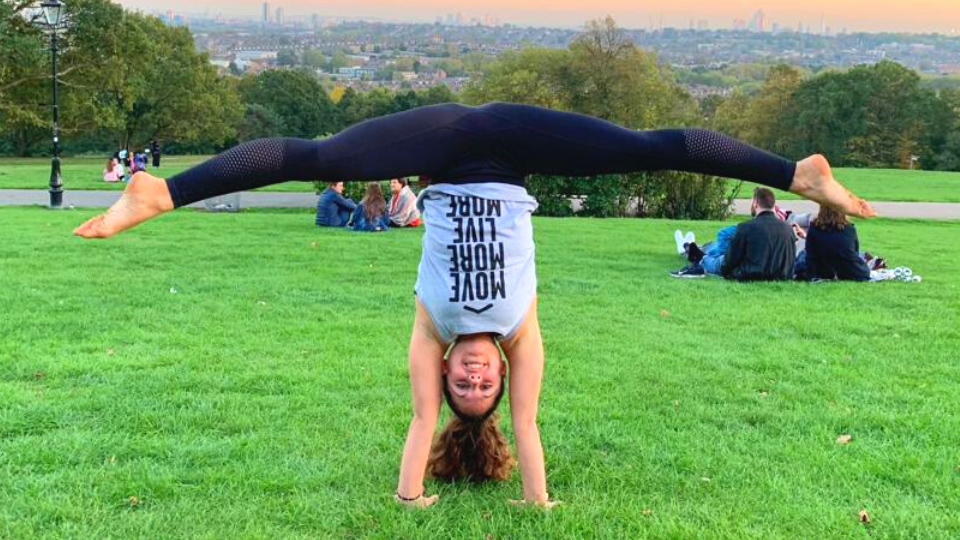
Conclusion
Yoga offers a multitude of physical, mental, and emotional benefits that can transform your life. By understanding the benefits of yoga, choosing the right yoga style, creating the perfect yoga space, and incorporating essential yoga equipment, you can embark on a fulfilling yoga journey. Whether you are looking to improve flexibility, increase strength, manage stress, support women’s health, or take your practice beyond the mat, yoga provides a diverse range of techniques and approaches to meet your unique needs. Begin your yoga journey today and experience the transformative power of this ancient practice.
Maximize Your Home Workouts with the Right Equipment and Accessories(Opens in a new browser tab)
La Roche-Posay Effaclar Mat Face Moisturizer Review(Opens in a new browser tab)

